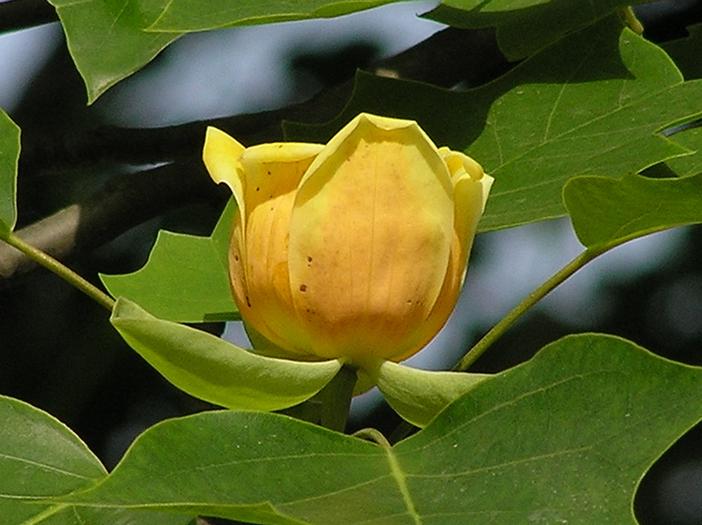Chinese Tuliptree
(Liriodendron chinense)
Chinese Tuliptree (Liriodendron chinense)
/
/

阿橋花譜 HQ Flower Guide
CC BY-SA 2.0
Image By:
阿橋花譜 HQ Flower Guide
Recorded By:
Copyright:
CC BY-SA 2.0
Copyright Notice:
Photo by: 阿橋花譜 HQ Flower Guide | License Type: CC BY-SA 2.0 | License URL: https://creativecommons.org/licenses/by-sa/2.0/ | Uploader: 阿橋 KHQ | Publisher: Flickr






























Estimated Native Range
Summary
Liriodendron chinense, commonly known as Chinese Tuliptree, is a deciduous tree, though some populations may be semi-deciduous, native to forested areas and mountainous regions in China and Vietnam. It can grow up to 40 meters (130 feet) in height. The Chinese Tuliptree is closely related to the American Tuliptree, Liriodendron tulipifera, but can be distinguished by its slightly larger and more deeply lobed leaves, as well as the shorter inner petals of its flowers, which do not possess the orange pigment found in L. tulipifera. The flowers are greenish-yellow with an orange band at the base, blooming in late spring to early summer and are quite showy, resembling tulips, hence the common name.
The Chinese Tuliptree is valued for its striking flowers, stately form, and vibrant yellow fall foliage. It is used in large gardens and parks, often as a specimen tree. It requires full sun to thrive and prefers moist, well-drained soils, though it is adaptable to various soil conditions. While it is not as widely cultivated as its American counterpart, it is gaining popularity due to its ornamental qualities. Gardeners should be aware that it has a large root system, which can be problematic near pavements or foundations. It is also relatively free of serious pests and diseases, making it a low-maintenance choice for landscapes.CC BY-SA 4.0
The Chinese Tuliptree is valued for its striking flowers, stately form, and vibrant yellow fall foliage. It is used in large gardens and parks, often as a specimen tree. It requires full sun to thrive and prefers moist, well-drained soils, though it is adaptable to various soil conditions. While it is not as widely cultivated as its American counterpart, it is gaining popularity due to its ornamental qualities. Gardeners should be aware that it has a large root system, which can be problematic near pavements or foundations. It is also relatively free of serious pests and diseases, making it a low-maintenance choice for landscapes.CC BY-SA 4.0
Plant Description
- Plant Type: Tree
- Height: 50-70 feet
- Width: 30-40 feet
- Growth Rate: Moderate
- Flower Color: Yellow, Green
- Flowering Season: Spring, Summer
- Leaf Retention: Deciduous
Growth Requirements
- Sun: Full Sun
- Water: Medium
- Drainage: Medium
Common Uses
Bee Garden, Bird Garden, Butterfly Garden, Deer Resistant, Fragrant, Hummingbird Garden, Low Maintenance, Showy Flowers
Natural Habitat
Forested areas and mountainous regions in China and Vietnam
Other Names
Common Names: Chinese Tulip Tree, Chinese Whitewood
Scientific Names: , Liriodendron chinense, Liriodendron tulipifera subsp. chinense, Liriodendron tulipifera subsp. sinensis, Liriodendron tulipifera var. chinense, Liriodendron tulipifera var. sinense,
GBIF Accepted Name: Liriodendron chinense (Hemsl.) Sarg.